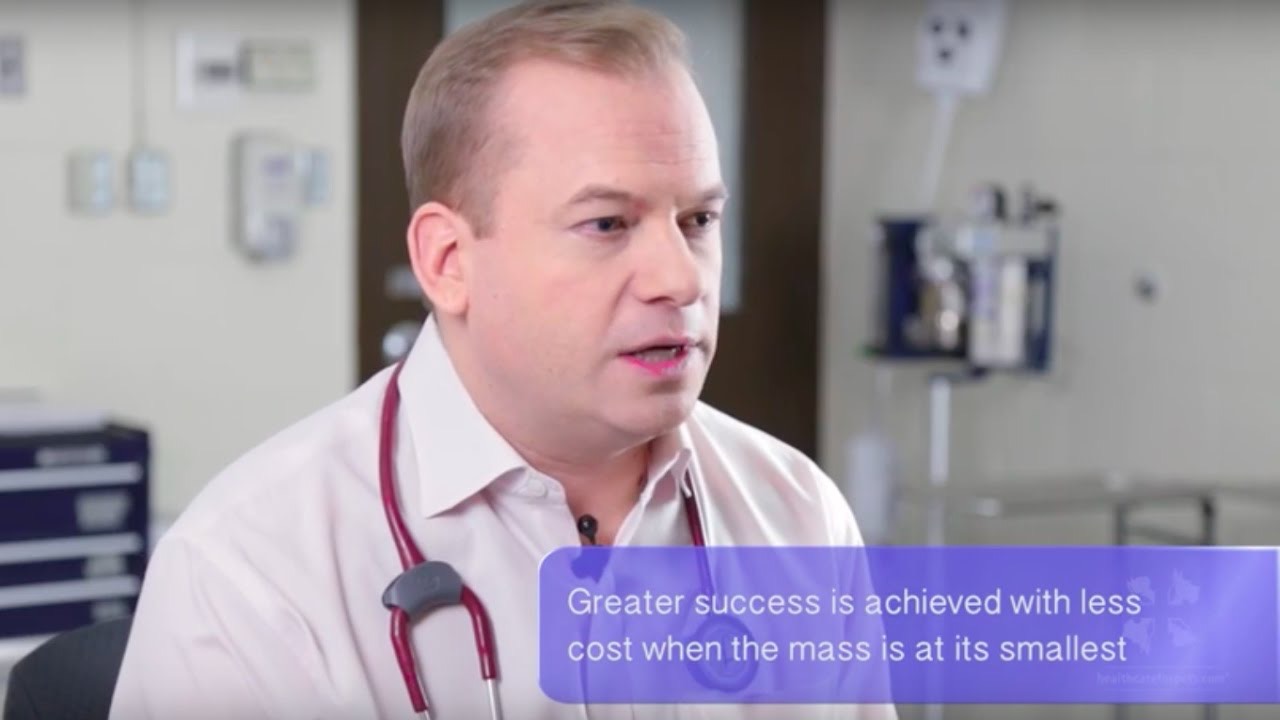-
Where to Check and What to Do if You Find a Lump or Bump on Your Dog or Cat
-
By: Dr. Clayton Greenway, B.Sc., DVM | Nov 4, 2016
-
Dr. Greenway discusses where to check and what you should do if you find a lump or a bump on your dog or cat. Other topics covered in this video include how to examine for masses, how often to examine them, how to sample a mass, cytology, fine needle aspirate, surgical removal, borders, margins, excision, healing, treatment, cancer and staging.
TRANSCRIPT:
I’m Dr. Clayton Greenway with healthcareforpets.com. Something I see a lot of is people that find a lump or a bump on their dog or cat and they come to the vet to take a look at it. This, I get really passionate about because I’ve seen a lot of mistakes made over how to address a lump or bump on your dog or cat.
What I want you to try to do is feel your pet all over its body, its legs, and try to feel for any masses. It’s amazing how large one can get without people noticing it. We don’t do this enough in our pets and even keep in mind in their mouths because there are certain masses and cancers and things that can grow in their mouths that you can find very early on if you’re looking for them. So I want you to do this every few months and make sure if you find anything, tell your vet about it, it can be really hard to see them because obviously they’re covered in hair and that can be difficult to notice them, you’ve really got to feel your pet to find them.
The most important thing to realize right off the bat is by looking at it we don’t know what it is, it has to get tested in every case. In order to do that, what your veterinarian has to do is poke it with a needle, it’s called a fine needle aspirate, you collect some material from that and you spit it out on a slide and you send it to the lab which is called cytology and that will identify it and I can’t tell you how important that is. Some of the worst words I here in veterinary practice is, “Just watch it.” I hate those words and I’ll tell you why, because people will start just watching a lump because it’s not bothering the dog, it’s not bothering the cat but the problem is, is over time it will grow larger in a lot of cases and I’ve seen some terrible experiences with that where all of a sudden it’s gotten to a point that it’s so large that it’s creating a daily pain for that animal and by the time you’re trying to deal with it then, it’s much more difficult to deal with.
You have to understand that a growth of any kind is much easier to deal with, cheaper, and you’ll be more successful dealing with it when it’s at its smallest. It’s important to realize that when we remove a mass from an animal, we don’t just remove that mass, we have to try to remove three centimeters of normal tissue all around that mass, so if you think about that, that’s a large amount of space on an animal.
So if you’ve got a mass on the leg, removing that amount of skin can be very difficult to close that incision afterwards. So again, dealing with these things when they’re at their smallest, it’s going to take the least amount of surgery time, it’s going to cost less and it’s going to be more successful at getting rid of that entire mass.
So once you’ve identified what type of mass it is, you can figure out whether it’s benign or malignant, more so if it’s conservative or aggressive and what your vet would then do next potentially is stage it and make sure it’s limited to that area and hasn’t spread somewhere else in the body by doing blood work or X-rays or ultrasounds and we can actually stage it first before we make a plan as to how to deal with that mass surgically.
This is one area of medicine where being proactive is absolutely vital and once again, if you find a mass be proactive, get it addressed, get it looked at so that you can have the best care for your pet, because the most important thing to us is your pet’s health here at healthcareforpets.com.
SummaryDisclaimer: healthcareforpets.com and its team of veterinarians and clinicians do not endorse any products, services, or recommended advice. All advice presented by our veterinarians, clinicians, tools, resources, etc is not meant to replace a regular physical exam and consultation with your primary veterinarian or other clinicians. We always encourage you to seek medical advice from your regular veterinarian.
Join the fastest growing membership in pet healthcare!
Sign up and get the latest pet health tips, news, articles and alerts delivered monthly to your inbox.



